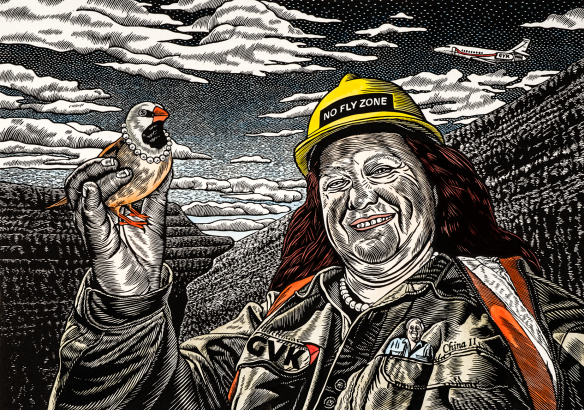Queensland is a treasure trove of highly varied landscapes, ecosystems and parks. From rainforests to eucalyptus groves, grasslands to tidelands and everything in between, our surroundings are magical, vibrant and vital.
What better way to celebrate Queensland’s natural magic than through art? Visual, musical, and spoken creativity is uniquely poised to capture the emotions and mystery woven into the fabric of nature.
This bond is powerfully expressed at the Bimblebox Nature Refuge. The Bimblebox Art Project, run by Jill Sampson, engages with the diversity of life in the sanctuary as well as issues of conservation and exploitation that are plaguing this beautiful ecological hotspot.
The Bimblebox Nature Refuge is an 8, 000-hectare sanctuary nestled in central-west Queensland. One of the few remaining intact remnant habitats, the Bimblebox refuge has never been cleared and is of extraordinarily high conservation value to ecologists state-wide.
This semi-arid deserts uplands refuge is home to a wide diversity of ecosystems, providing welcome and necessary shelter to myriad indigenous flora and fauna. Over 158 bird species call Bimblebox home, including twelve which are of high conservational significance. There are also a wide variety of reptile and animal species which thrive here.
Bimblebox further doubles as a sustainable cattle property, where on-going research is taking place in nature ecology and sustainable grazing practices. The aim is to marry production with biodiversity conservation.
Despite having a Nature Refuge Agreement with the QLD State Government, Bimblebox and other nature refuges are not protected from coal mining.
In fact, the Bimblebox Nature Refuge is under threat, as of 2007, from a massive coal-mining operation proposed for the Galilee Basin. The projected plan suggests open-cut mining more than half of the reserve, and underground mining the rest. This would increase the state’s coal production by 150%, and Australia’s emissions by 130%. The coal produced will be sent to China to be used in energy and power generation.
The effect of this on Bimblebox‘s groundwater reserves, agriculture and ecosystems, not to mention on Australia’s efforts to apparently reduce their emissions, will be profound. If Bimblebox survives, it will be one of the only remaining long-term research sites into ecology and biodiversity conservation. If it does not, the priorities of the QLD State Government will have been made clear.
Luckily, Bimblebox and the conservation efforts taking place there are not without supporters. In 2012, artist Jill Sampson launched the Bimblebox Art Project, which aims to creatively engage with and document the refuge’s ecosystems and habitats.
The initiative gathered artists at the refuge every September. Together, they would explore the threatened ecology of the sanctuary and comment on biodiversity loss, food security, water use and climate change from within their own creative practices.
The Bimblebox Art Project is hitting Brisbane this September with their Bimblebox 153 Birds exhibition, which has been touring since 2015. Head to the Queensland College of Art from the 3rd to the 14th of September to be blown away by the spoken word, music and art which celebrate the multiplicity and significance of the bird species which inhabit the sanctuary. This year, the exhibition includes work by Aussie music and art legend, Reg Mombassa.
Over 450 writers, musicians and artists worldwide have creatively given voice to the 158 bird species of Bimblebox. Beautiful artist prints and soundscapes, composed of poetry, prose and musician’s bird calls, come together to create a dynamic and poignant installation.
The idea came about when Jill received interest in the Bimblebox Art Project from artists who couldn’t make it to the remote location. To find ways of involving them and their work in an exhibition which needed to be compact and transportable, Jill explored multi-disciplinary and multimedia options.
Birds are one of the critical ways humans interact with the Wild, be it by sight or sound. As such, they make a highly relatable symbol for Bimblebox, one which feels real, tangible and provocative. They also depend on the soil and its own ecosystems for sustenance, accordingly symbolising the symbiotic nature of the Bimblebox ecology.
The first call-out went out in 2013, and the first exhibition took place in 2015. The project has been on-going since then, with over seven new species having been discovered and added in the meantime.
Reg Mombassa, who has been a successful and beloved musician and artist since 1976, made his own contribution to 153 Birds. His iconic Mambo style art and beautiful re-imagining of a musical bird call have joined the effort the save Bimblebox. He encourages people to come to the exhibition and engage with the issues which it raises, hoping that collective awareness can help to bring about change.
See you there!
For more information, visit their website.
Image Credit: Rew Hanks, The Coal Throated Finch, 2014, Hand Coloured Linocut, photo courtesy of the artist.
